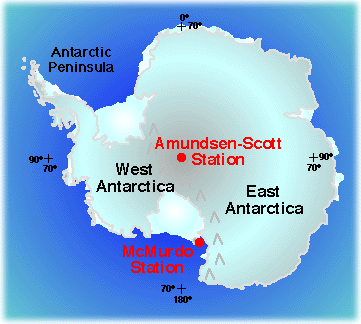
|
|






Hi, my name is Elke Bergholz and this is my 9th year of teaching. In these years I have taught courses such as Life Science, Physical Science, General and Honors Biology, Environmental Science, AP Biology, Biotechnology, Human Physiology, an
d the advanced as well as standard level biology for the International Baccalaureate, an internationally accepted high school diploma. I presently teach 9th - 12th grade biology at the United Nations International School in New York City which is a school
of 1200 students, K - 12 . Since our school is located next to the East River, I advised an after school river monitoring student group for several years. I am also a research mentor to several students every year who have to complete independent researc
h at the higher level biology, a requirement for the international diploma.
In my free time, I enjoy all kinds of different all- season outside
activities in and outside the " Big Apple". Prior to my teaching, I
conducted research for many years in different parts of the world in
marine biology, fishery biology as well as oceanography. My parcticipation
in the Antarctic program is part of the Teachers Experiencing Antarctica
(TEA) program which is funded by the National Science Foundation (NSF).

South Pole Monitoring for Climate Change
Dr. Dave Hofmann
National Oceanic and Atmospheric Administration
Climate Modeling and Diagnostic Laboratory
Boulder, Colorado
While in the Antarctic, I will be a member of the research team of Dr. David Hofmann at the Climate Monitoring and Diagnostic Laboratory (CMDL) of the National Oceanic and Atmospheric Administration, Boulder, Colorado. Dr. Hofmann is the principal investi
gator of CMDL's research program at the Amundsen-Scott South Pole Station, which monitors climate forcing agents ( e.g., greenhouse gases, ozone , aerosols, solar radiation) and ozone depleting substances (e.g. CFCs and their replacements). We will collec
t ozone data by launching electrochemical ozonesondes on balloons which will measure the vertical profile of ozone from the surface to 30 km. These measurements will help assess the status of the Antarctic ozone hole which occurs each spring as a result o
f the long-term buildup of global pollutants in the atmosphere. I will also use data on ultraviolet radiation measured at the South Pole and compare it with our total ozone measurements, since ozone acts as a shield from biologically damaging ultraviolet
rays. We will also upgrade and maintain instruments. During the summer of 1998 I will have a chance to work with Dr. Hofmann's ozone group in Boulder, Colorado, and become familiar with his work including the launching of ozonesondes.
While in the Antarctic, I will be in contact electronically with my
students in the Upper School and with those of the Junior and Middle School
of UNIS as well as students of other schools to answer questions. Some of
the information we will collect might be instantly used in the class
room.
I am very excited to be able to do research in the Antarctica, our last frontier, and to share my experience with many students and teachers while on the ice. I am also excited to be able to develop a polar environmental unit for different academic levels
concerning the Antarctica, one of our most remote ecosystems which can teach us so much about global issues.
Polar Classroom Activity:
Ozone and Temperature Data Analysis, South Pole Antarctica

Elke will travel to Amundsen-Scott South Pole Station by way of
McMurdo Station.

January 1999
August 1998
| Su |
Mo |
Tu |
We |
Th |
Fr |
Sa |
| -- |
-- |
-- |
-- |
-- |
-- |
1 |
| 2 |
3 |
4 |
5 |
6 |
7 |
8 |
| 9 |
10 |
11 |
12 |
13 |
14 |
15 |
| 16 |
17 |
18 |
19 |
20 |
21 |
22 |
| 23 |
24 |
25 |
26 |
27 |
28 |
29 |
| 30 |
31 |
-- |
-- |
-- |
-- |
-- |
Return to top of page
|







